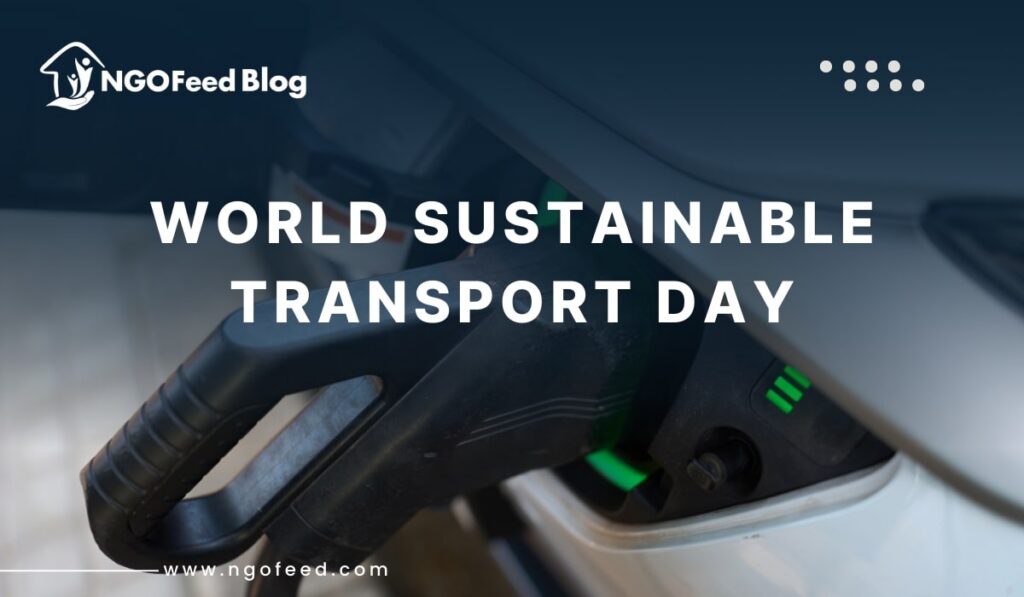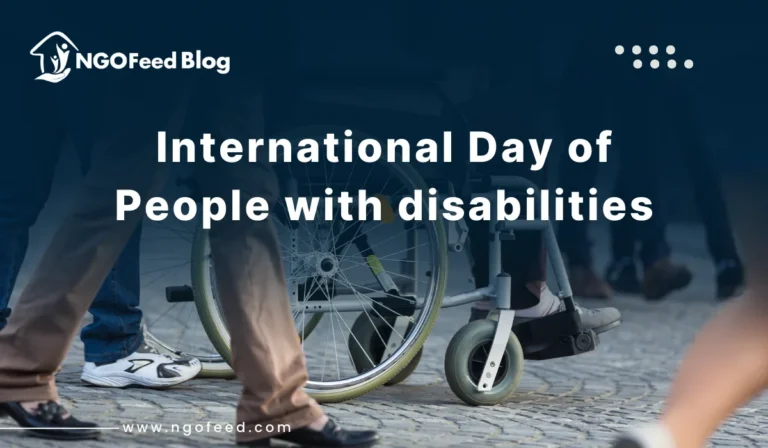The World Sustainable Transport Day, observed globally on 29th Nov, stands as a powerful reminder of the urgent need to transform how the world moves. With the theme 2025 focusing on accelerating clean, inclusive, and resilient mobility, this day highlights the collective responsibility of governments, industries, and citizens to shift toward greener transport solutions. From hydrogen fuel systems to high-speed electric rail networks, sustainable mobility has become central to economic growth, climate action, and social equity. The observance emphasizes replacing fossil-fuel-dependent systems with innovative, energy-efficient alternatives that reduce emissions and improve global air quality.
Rooted in a UN General Assembly resolution adopted in 2023, the day also reflects the global push for safe, affordable, and accessible mobility aligned with the Sustainable Development Goals. As nations invest in modern transport infrastructure, World Sustainable Transport Day 2025 reinforces a future where eco-friendly mobility strengthens communities and protects the planet for generations.
Table of Contents
World Sustainable Transport Day 2025
World Sustainable Transport Day serves as a crucial annual checkpoint to measure global process toward cleaner mobility goals. The initiative underscores the collective responsibility of all sectors – government, private enterprises, and individual to embrace innovative solutions like hydrogen fuel cells and high speed electric rail networks. By investing in resilient and green infrastructure, nations can bolster economic growth while simultaneously achieving ambitious climate targets. This global observance is a call to action to move beyond traditional, fossil-fuel-dependent systems and foster a future where sustainable and inclusive transport is the norm, ensuring a healthier planet for generations to come. For more information on UN initiatives, the United Nations website is a good resource.
What is the History of World Sustainable Transport Day?
The History of World Sustainable Transport Day is rooted in the global recognition of the urgent need to address the significant environmental and social impacts of current transport systems. The United National General Assemble (UNGA) formally established the day in a resolution adopted on May 16, 2023. The initiative was led by Turkmenistan and co-sponsored by 66 other nations, underscoring board international support for the concept. The date of November 26 was chosen because the first UN Global Sustainable Transport Conference was held on that day in Ashgabat, Turkmenistan, in 2016. The day was created to raise awareness about the crucial role of safe, affordable, accessible, and environmentally friendly transportation in achieving the Sustainable Development Goals (SDGs).
The core motivation behind the observance is the dual role of transport in modern society: it is vital for economic growth, trade, and social welfare, yet it is also a major source of greenhouse gas emissions, accounting for approximately a quarter of global CO2 emissions from fuel combustion. The UNGA emphasized in its resolution A/RES/77/286 that shifting towards sustainable, low-emission, and energy-efficient modes of transport is an essential component of climate change mitigation.
By establishing this annual day, the international community provided a dedicated platform to promote best practices in developing quality, resilient infrastructure and fostering intermodal connectivity, thereby ensuring that transport systems contribute positively to both the planet and its people.
The Slogan for World Sustainable Transport Day 2025 is:
“Accelerating the shift: Paving the way for inclusive and Resilient Mobility”
Meaning and Significance: The slogan highlights the urgent need for a rapid transition ( “Accelerating the shift’) away from unsustainable transportation systems and towards cleaner, more equitable alternatives.
“Paving the way” refers to the literal and figurative infrastructure changes needed, emphasizing the creation of transport systems that are
“Inclusive” (accessible and affordable for everyone, leaving no one behind) and “Resilient” (able to withstand climate impacts, economic shocks and future challenges.
World Sustainable Day 2025 Theme
The theme of World Sustainable Transport Day 2025 emphasizes advancing clean mobility solutions by integrating electric vehicles, public transport, cycling infrastructure, and smart city planning to build environmentally responsible, future-ready transportation system worldwide.
This theme underscores the critical necessity of decarbonizing transportation system to mitigate the devastating effects of climate change and enhance the liability of urban environment. By championing eco-conscious and economically mobility, we can foster a paradigm shift towards a more sustainable future. This strategic transition is paramount not only for meeting global sustainability targets and climate action commitments bur also for ensuring that development is equitable and provides accessible, clean mobility solutions for all members of society
7 Key Elements of World Sustainable Transport Day
- Clean Energy Mobility: Promotes transport powered by renewable energy like solar, wind, and hydrogen to reduce carbon emissions, improve air quality, and support a greener, healthier global mobility future.
- Public Transport Advancement: Public Transport Advancement strengthens metro, bus, and tram networks to reduce congestion and pollution. It ensures reliable, affordable, and fast connectivity across cities. Modern fleets, electric buses, and integrated smart-ticketing systems improve urban mobility, support climate goals, reduce traffic delays, and make transport more accessible for people in both urban and rural regions.
- Non-Motorized Transport: Non-Motorized Transport promotes walking, cycling, and micro-mobility through safe bike lanes, dedicated footpaths, and eco-friendly corridors. These systems encourage healthier lifestyles, reduce environmental impact, support low-income communities, and improve city air quality. Governments are focusing on green zones, pedestrian-first streets, and cycle-sharing systems to build people-centered, sustainable mobility landscapes.
- Smart & Digital Mobility: Smart Mobility integrates intelligent traffic systems, EV charging grids, AI-driven route planning, GPS navigation, and real-time data analytics. These technologies minimize delays, optimize vehicle flow, enhance road safety, and reduce energy consumption. Digital tools support faster travel, lower emissions, and create connected, future-ready transport networks for smarter urban living.
- Inclusive Accessibility: Inclusive Accessibility ensures transport systems support women, elderly, children, and persons with disabilities through barrier-free design, safe facilities, equal mobility opportunities, and universal transport access.
- Road safety Improvement: Road Safety Improvement focuses on safer road design, strict enforcement, driver training, and modern vehicle safety standards. Awareness programs, speed monitoring, and emergency response systems help reduce accidents and save lives. Global policies now emphasize Vision Zero, aiming for zero road fatalities through smart, human-centered transport planning and responsible mobility habits.
- Sustainable Urban Planning: Sustainable Urban Planning integrates transport with green infrastructure, pedestrian zones, mixed-use areas, and low-carbon development to reduce travel distance and build climate-resilient, future-ready cities.
Two Best Global Apps promoting Sustainable Transport
- Google Maps (Global Mobility App): Google Maps promotes sustainable transport by offering accurate public transit routes, cycling paths, EV-charging locations, and real-time traffic updates. It encourages eco-friendly travel choices and reduces carbon footprint worldwide.
- Citymapper (Smart Urban Travel App): Citymapper supports sustainable transport through multi-modal route planning, including buses, metro, cycling, walking, and shared mobility. It highlights low-emission travel options and helps users choose faster, greener, cost-effective journeys.
Conclusion
World Sustainable Transport Day, observed on 29th November, reinforces the global commitment to building cleaner, safer, and more inclusive mobility systems. With the 2025 theme emphasizing resilient and eco-friendly transport, the day highlights the urgent need to reduce carbon emissions, expand public transport, promote clean energy mobility, and improve road safety. It acts as a powerful reminder that sustainable transport is central to achieving climate goals, economic growth, and social equality. As countries adopt smarter technologies and greener infrastructure, this observance inspires collective action to create transport systems that protect the planet and ensure accessible, equitable mobility for all.
Frequently Asked Questions (FAQs)
What is World Sustainable Transport Day?
World Sustainable Transport Day promotes eco-friendly mobility, highlighting green public transport, cycling, walking, and low-emission travel methods to create cleaner, safer, and inclusive global transportation systems for future generations.
What is the theme of the World Sustainable Transport Day 2025?
The 2025 theme focuses on advancing smart, inclusive, low-carbon mobility systems using clean technology, public transit expansion, and climate-friendly travel choices to support sustainable development and reduce global environmental impact.
What is the slogan for World Transport Day?
“Move Green, Move Smart” encourages people to choose sustainable, accessible, and climate-friendly transportation options that improve public health, reduce pollution, promote safety, and support environmentally responsible mobility worldwide.
Best apps to plan sustainable travel routes?
Apps for Sustainable Travel Planning
Google Maps Offers public transit, walking, cycling, and EV-charging location routes
Helps reduce carbon footprint by suggesting green travel options
Available on Android & iOS
Citymapper Integrates buses, metro, bikes, walking, and shared mobility
Prioritizes low-emission transport modes and real-time routing
Covers many global cities
Why is sustainable transport important for our future?
Sustainable transport is essential because it reduces pollution, saves energy, improves public health, supports eco-friendly cities, boosts economic growth, and ensures safe, affordable, accessible mobility for future generations.










